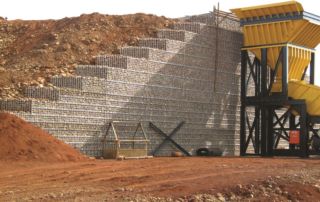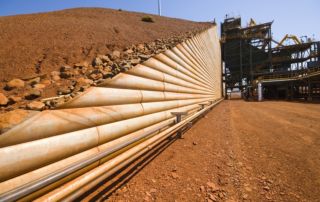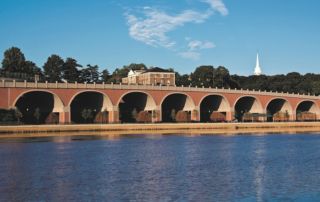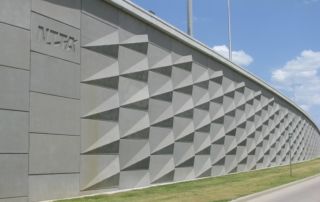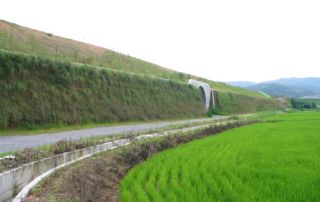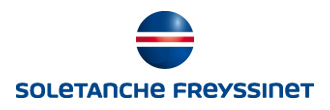Terre Armée’s Reinforced Earth® walls are proven to be a highly stable explosion barrier.
Our structures are designed to impede the propagation of a blast at ground level and absorb high levels of energy with strong tolerance for deformation.
Testing and approval
Full-scale blast testing of Reinforced Earth® walls have taken place between 1975 and 2014. Tests were performed on structures built with both concrete and steel facing elements. Tests have taken place in USA, France, Germany, Australia, Israel, and South Korea.
In 1988 the US Army Corps of Engineers designated Geoquest walls as a standard design for reinforced soil barricades. Subsequently, the Department of Defense Explosives Safety Board (DDESB) approved our walls to protect facilities and equipment located close to explosives sites from high-velocity, low-angle fragment damage.
The official approval review documentation, (namely DEF 149-30-01) concluded the following benefits of building blast barricades with Reinforced Earth® MSE walls. That our walls:
- Can be economically and rapidly constructed
- Requires shallow foundation
- Variety of architectural facing elements and finishes available (cruciform, hexagonal, ribbed, etc.)
- No height or length limitations
- Facing elements are reusable
- Walls can be located close to site boundaries or obstructions
- System adaptable to sloping wall configurations and to tier
- System can tolerate significant amount of settlement
- Repair can be accomplished on individual facing elements
- Galvanized strips, steel wire mesh, geosynthetics are used for soil reinforcement
A similar research and development trajectory for the TechSpan® precast concrete arch technology beginning in the late 1990’s also continues today. In 1999, both Reinforced Earth® and TechSpan® was approved in combination by the US Department of Defense Explosives Safety Board (DDESB) for construction of blast barriers or standard oval arch earth covered storage magazines (ECM). TechSpan®’s 3-hinge staggered arrangement integrates the arch’s backfill into the FEM model giving TechSpan® the inertia and flexibility to absorb explosive energy while remaining structurally intact.
In 2020 this standard design was improved with options for the owner’s engineer or building contractor to select optional geosynthetic soil reinforcements and fiber concrete reinforcements in lieu of steel reinforcements.
Non-military applications
Private sector and municipal establishments also encounter risks associated with explosions and bombardment. For instance, mining sites are known to utilize vast amounts of explosives in their operations. We have collaborated with leading mining companies, explosive product manufacturers and fortifications investigative board members to reduce their risks in their operating environment.
Wall materials and configurations
Reinforced Earth® barricades and blast shielding can be clad with concrete, steel or even vegetation. While in most cases we employ concrete facing, our Terratrel® and TerraMet™ alternative steel facing systems offer the benefit of being lightweight and easily transportable for rapid installation without the need for heavy equipment. The choice of soil reinforcements extends to high-adherence steel strips, high-tensile geosynthetic strips (GeoStrap®) and welded wire bar mats, depending on your specific project requirements.
Our walls may be configured as either single revetted or double revetted (back-to-back), and can stand alone or be supported by stabilized embankment. Reinforced Earth® walls can be constructed in an unbroken vertical plane or as tiered or terraced.
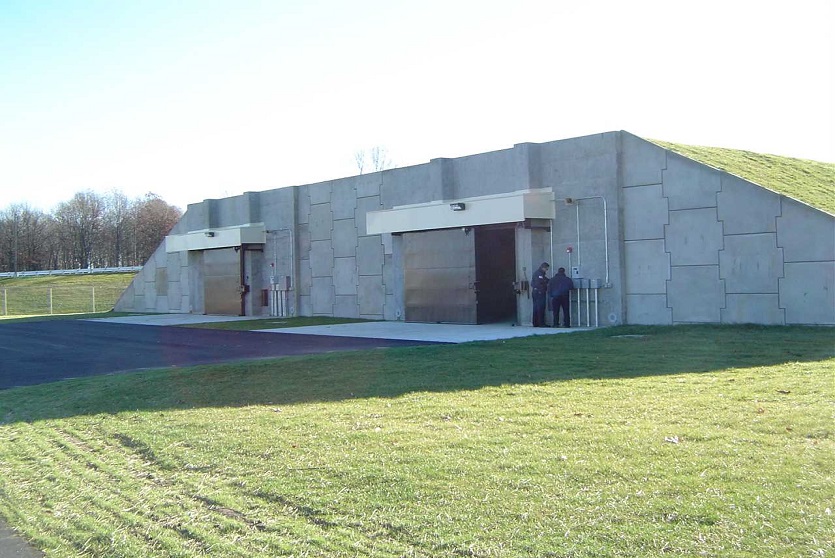
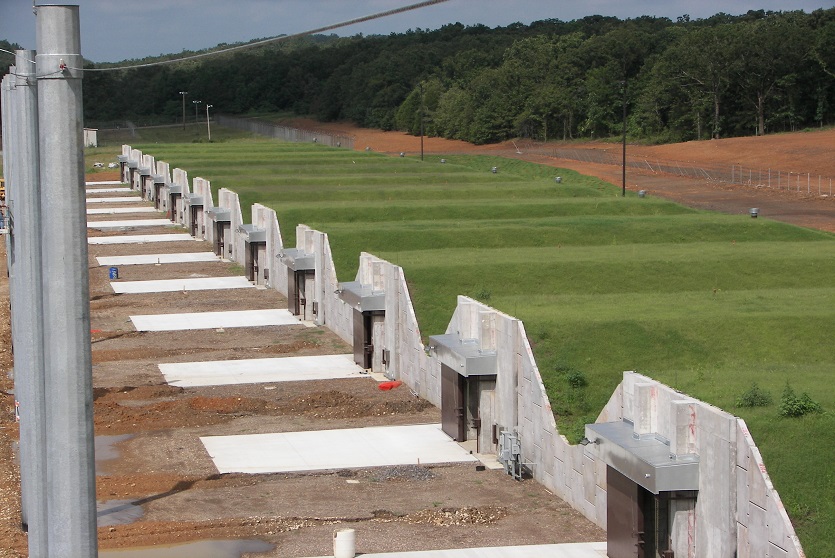
Protective arch structures
An extension of our soils-structures solutions include blast resistant enclosures consisting of TechSpan® precast arches in the form of confined earth-covered “igloo” type structures. These structures are designed to the highest military and commercial standards to protect your assets against damage and propagation from all sorts of external assault and natural forces.

